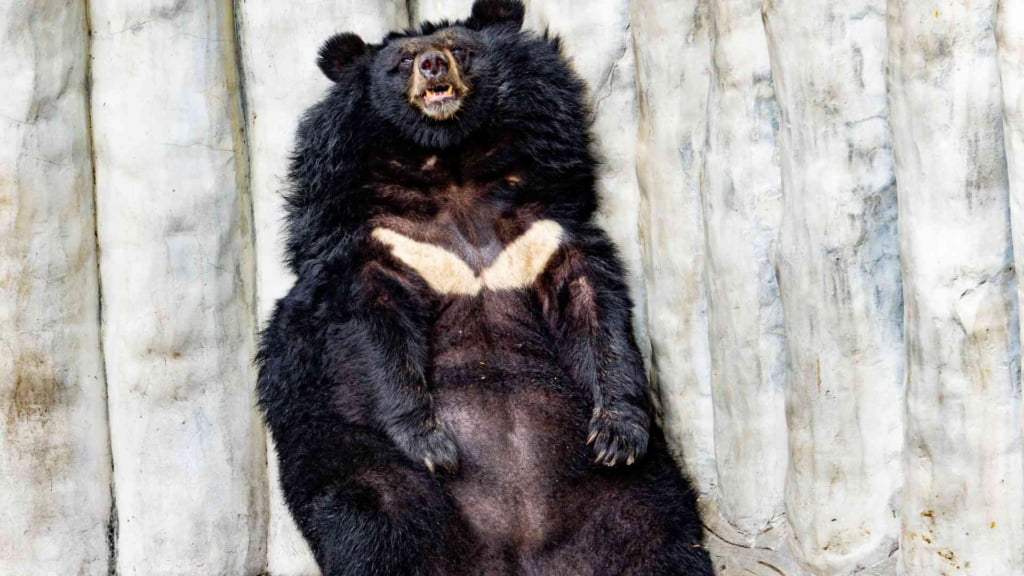Key Takeaways
| Fact | Description |
| Scientific Name | Ursus thibetanus |
| Common Name | Asiatic black bear, Moon bear, Asian black bear and White-chested bear |
| Habitat | Tropical rainforests, Deciduous forests and Coniferous forests |
| Diet | Omnivorous |
| Status | Vulnerable |
Introduction to the Asiatic Black Bear
The Asiatic Black Bear, also known as the moon bear due to the white crescent moon shape on its chest, is a medium to large-sized species of bear that is found across the Asian continent. It has another name called Asian black bear and white-chested bear.
Habitat and Distribution
The Asiatic Black Bear is found in a variety of habitats, including:
- Tropical rainforests
- Deciduous forests
- Coniferous forests
This animal lives in many different places around the world. It can be found on tall mountains of the Himalayas, in the southeastern part of Iran, in the northern areas of the Indian subcontinent, Korean Peninsula, China, in the Russian Far East, on the islands of Honshū and Shikoku in Japan, and in Taiwan.
Physical Characteristics
| Characteristic | Description |
| Size | 1.2 to 1.9 meters long (4-6.25 ft) |
| Weight | 100-200kg (220-440 lbs) |
| Color | Black with a distinctive white patch on the chest |
Diet
Asiatic Black Bears are omnivorous. Their diet includes:
- insects
- beetle larvae
- invertebrates
- termites
- grubs
- carrion
- cherries
- bees
- eggs
- mushrooms
- bark
- roots
- tubers
- dogwood
- fruits
- nuts
- seeds
- honey
- herbs
- acorns
- grain
Behavior
Asiatic black bears are diurnal, but if they live near human habitations, they switch to being nocturnal. When they walk, they line up from the biggest to the smallest. They are great at climbing rocks and trees, and will climb to find food, rest, get some sun, hide from enemies, and even hibernate. Some older bears might get too heavy to climb.
They spend half of their life in trees and are one of the biggest arboreal mammals. In a place called the Ussuri territory in the Russian Far East, Asiatic black bears can spend up to 15% of their time in trees.
They break branches and twigs to make a kind of nest for themselves when they eat in trees. This makes many trees in their home area have nest-like structures at the top. They will rest for a little while in nests on trees that are fifteen feet or higher.
Reproduction
Within Sikhote-Alin, their breeding season occurs earlier than brown bears do, usually from the middle of June to the middle of August. Birth also occurs earlier, in the middle of January.
Female bears, called sows, usually have their first litter when they are three years old. Just like brown bears, Asiatic black bears have something called delayed implantation. Sows usually give birth in caves or inside hollow trees in the winter or early spring, after a gestation period of 200–240 days.
When cubs, are born, they weigh 368.5 grams or 13 ounces. Cubs start to walk when they are four days old and open their eyes three days after that. A Litter usually has 1 to 4 cubs at a time, but most of the time have 2.
Lifespan
The average lifespan in the wild is 25 years, while the oldest Asiatic black bear in captivity died at the age of 44.
Conservation Status
The Asiatic Black Bear is classified as Vulnerable on the IUCN Red List.
References:

